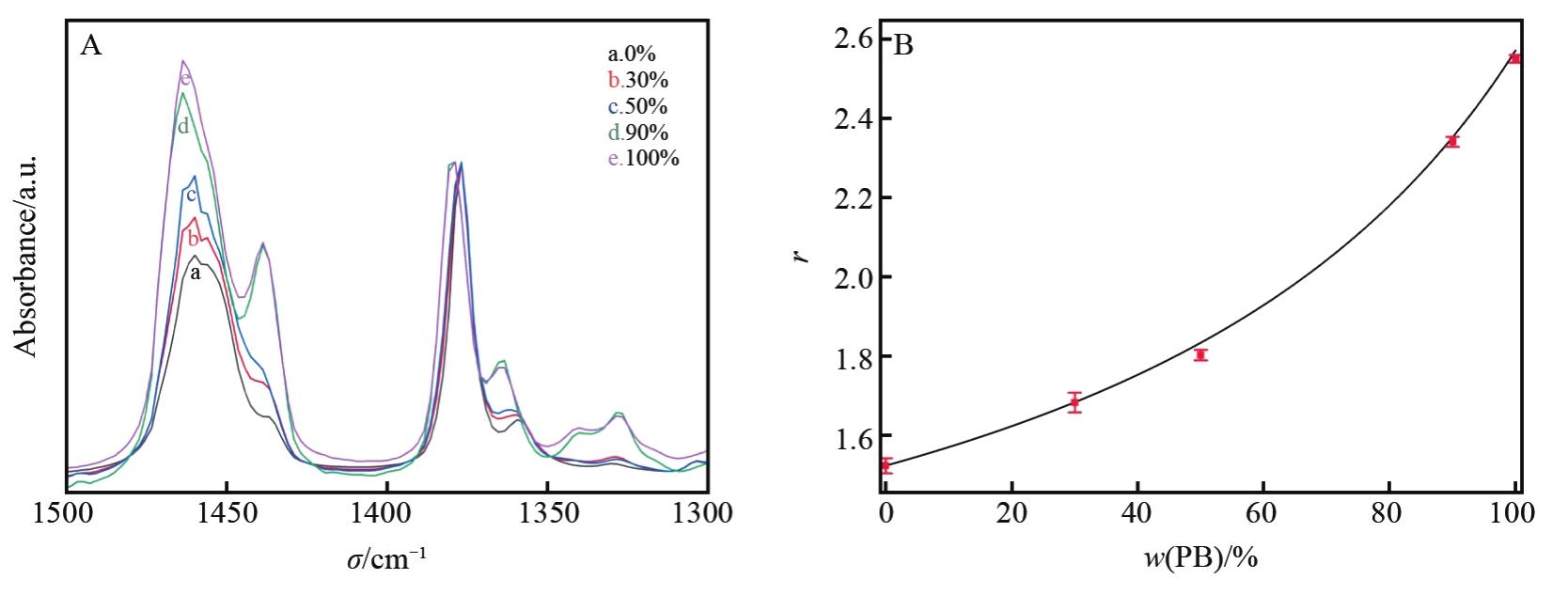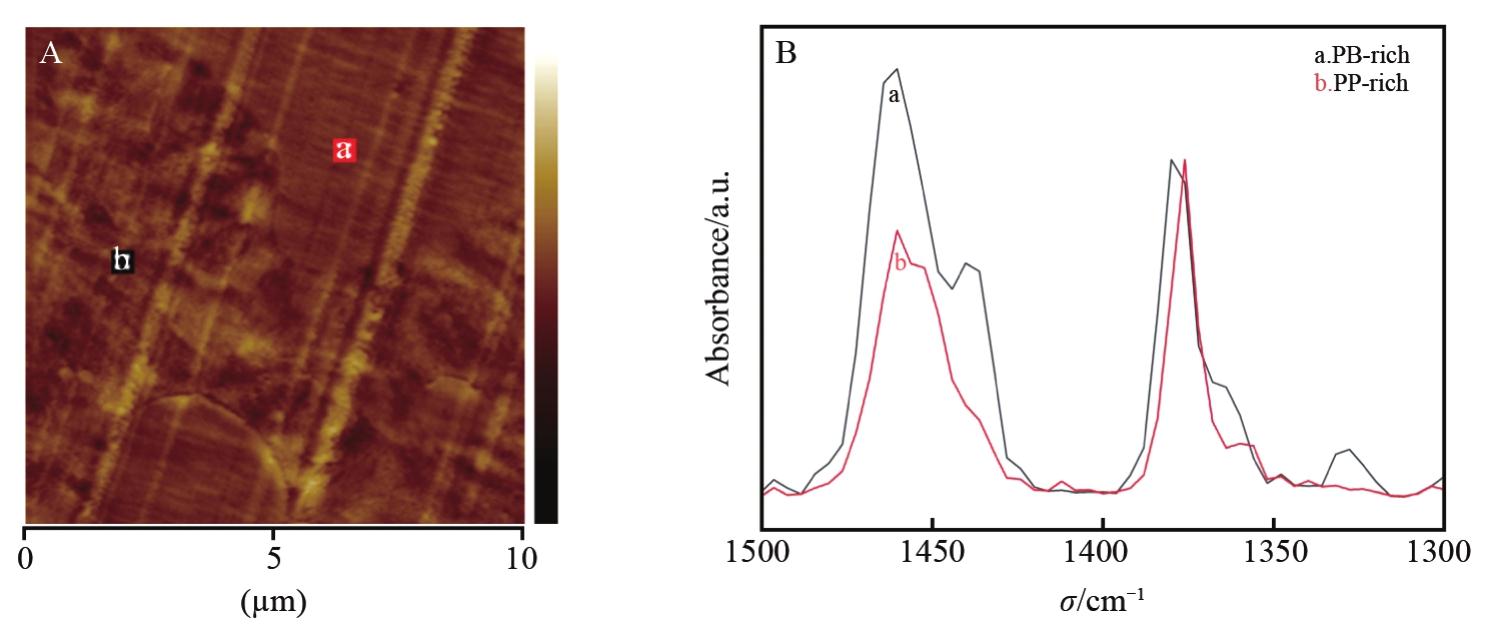| [1] |
DANUSSO F, GIANOTTI G. The three polymorphs of isotactic polybutene-1: dilatometric and thermodynamic fusion properties[J]. Makromol Chem, 1963, 61:139-156.
|
| [2] |
MILLER R L, HOLLAND V F. On transformations in isotactic polybutene-1[J]. J Polym Sci, Part B: Polym Lett, 1964, 2(5):519-521.
|
| [3] |
COJAZZI G, MALTA V, CELOTTI G, et al. Crystal-structure of form-3 of isotactic poly-1-butene[J]. Makromol Chem Macromol Chem Phys, 1976, 177(3):915-926.
|
| [4] |
SHIEH Y T, LEE M S, CHEN S A. Crystallization behavior, crystal transformation, and morphology of polypropylene/polybutene-1 blends[J]. Polymer, 2001, 42(9):4439-4448.
|
| [5] |
ZHONG Z X, GE H, SU Z H. Direct formation of form I′crystals in polybutene-1/polypropylene blend enhanced by cold crystallization[J]. Polymer, 2018, 156:30-38.
|
| [6] |
WANG Z, DONG X, LIU G. et al. Interfacial nucleation in iPP/PB-1 blends promotes the formation of polybutene-1 trigonal crystals[J]. Polymer, 2018, 138:396-406.
|
| [7] |
SIEGMANN A. Crystallization of crystalline/crystalline blends: polypropylene/polybutene-1[J]. J Appl Polym Sci, 1982, 27(3):1053-1065.
|
| [8] |
LEE M S, CHEN S A. The polymer-polymer interaction parameter in polybutene-1/polypropylene[J]. J Polym Res, 1996, 3:235-238.
|
| [9] |
CHAM P M, LEE T H, MARAND H. On the state of miscibility of isotactic poly (propylene)/isotactic poly (1-butene) blends: competitive liquid-liquid demixing and crystallization processes[J]. Macromolecules, 1994, 27(15):4263-4273.
|
| [10] |
XU Y, LIU C G, NIE H R, et al. Fractionated and confined crystallization of polybutene-1 in immiscible polypropylene/polybutene-1 blends[J]. Chin J Polym Sci, 2018, 36(7):859-865.
|
| [11] |
JI Y X, SU F M, CUI K P, et al. Mixing assisted direct formation of isotactic poly (1-butene) form I′crystals from blend melt of isotactic poly (1-butene)/polypropylene[J]. Macromolecules, 2016, 49(5):1761-1769.
|
| [12] |
DAZZI A, PRAZERES R, GLOTIN F, et al. Chemical mapping of the distribution of viruses into infected bacteria with a photothermal method[J]. Ultramicroscopy, 2008, 108(7):635-641.
|
| [13] |
DAZZI A, PRAZERES R, GLOTIN F, et al. Analysis of nano-chemical mapping performed by an AFM-based ("AFMIR") acousto-optic technique[J]. Ultramicroscopy, 2007, 107(12):1194-1200.
|
| [14] |
DAZZI A, PRATER C B, HU Q, et al. AFM-IR: combining atomic force microscopy and infrared spectroscopy for nanoscale chemical characterization[J]. Appl Spectrosc, 2012, 66(12):1365-1384.
|
| [15] |
DAZZI A, GLOTIN F, CARMINATI R. Theory of infrared nanospectroscopy by photothermal induced resonance[J]. J Appl Phys, 2010, 107(12):124519.
|
| [16] |
HINRICHS K, SHAYKHUTDINOV T. Polarization-dependent atomic force microscopy-infrared spectroscopy (AFM-IR): infrared nanopolarimetric analysis of structure and anisotropy of thin films and surfaces[J]. Appl Spectrosc, 2018, 72(6):817-832.
|
| [17] |
LU F, JIN M Z, BELKIN M A. Tip-enhanced infrared nanospectroscopy via molecular expansion force detection[J]. Nat Photonics, 2014, 8(4):307-312.
|
| [18] |
TANG F, BAO P, SU Z. Analysis of nanodomain composition in high-impact polypropylene by atomic force microscopy-infrared[J]. Anal Chem, 2016, 88(9):4926-4930.
|
| [19] |
温诗甫. 傅里叶变换红外光谱分析[M]. 化学工业出版社, 2016.
|
|
WEN S P. Fourier transform infrared spectroscopy analysis[M]. Chemical Industry Press, 2016.
|

 )
)


